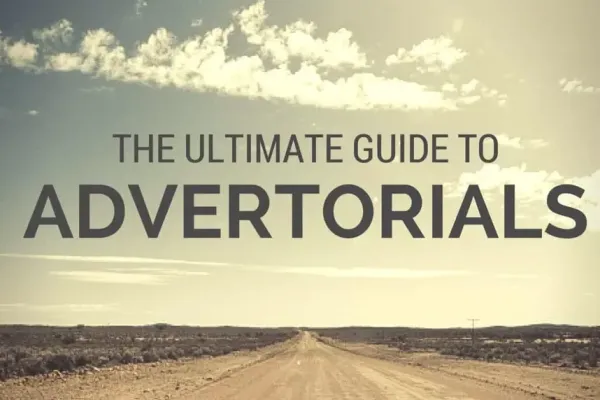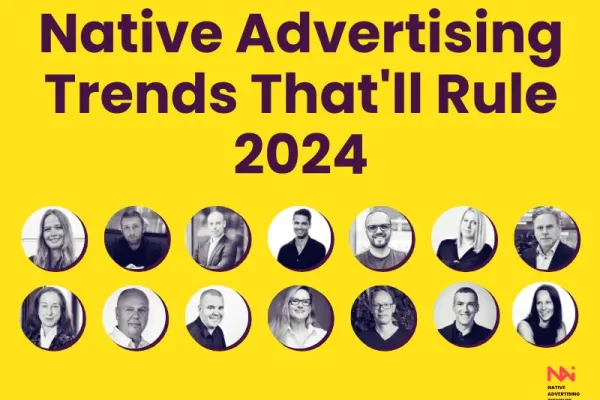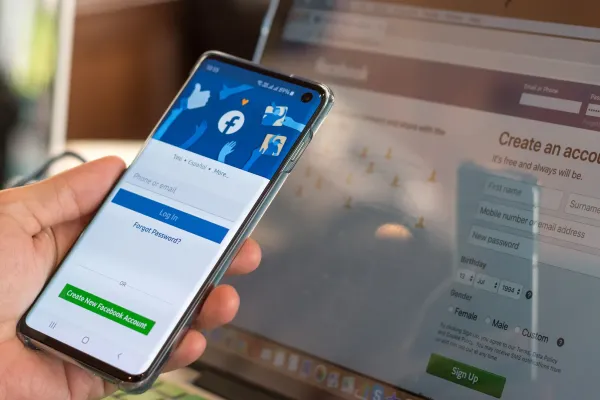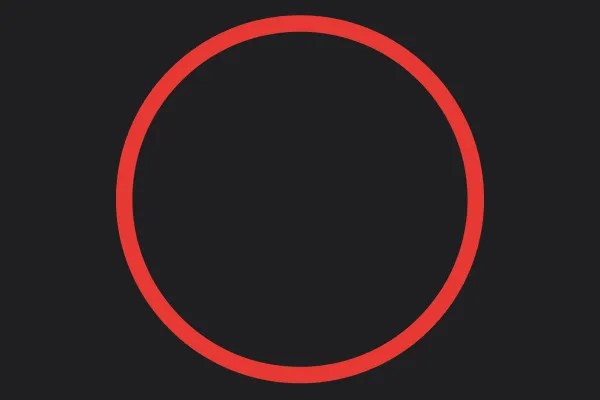According to Business Insider, Native advertising will drive 74% of all ad revenue by 2021.
The reason is that brands simply see higher brand lift and engagement here. For comparison, that’s not the case with traditional banner ads which are no longer effective.
Another thing that is interesting is that brands understand the shift to a mobile-first world. This causes them to create strategies which focus specifically on this channel.
That’s why in this blog post we wanted to explore 7 mobile native advertising trends to watch for in 2018.
READ MORE: Native Advertising for Mobile: Formats & Tips for Small Screens
Focus will shift to a mobile-first perspective
In 2017, Mobile accounted for 59.9% of all internet traffic. The share for desktop was just 40.1%.
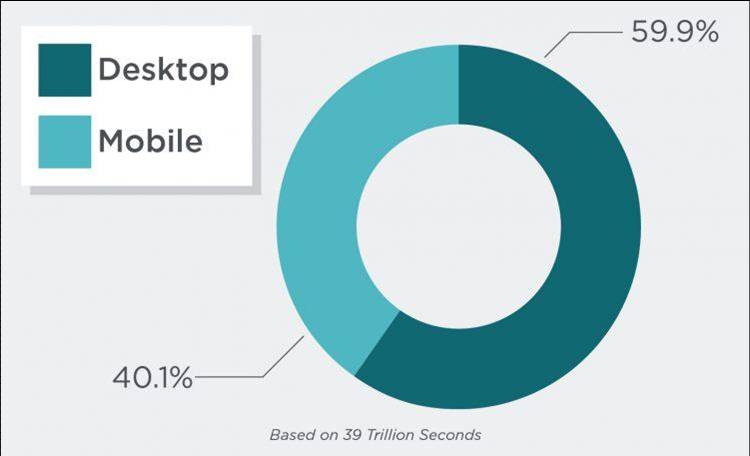
Source: stonetemple.com
So it is expected the percentage of the mobile traffic to grow even more in 2018.
At the same time, social media platforms are heavily dominated by mobile.
For example, Facebook has a 1.74 billion mobile monthly active users.
What’s interesting is that 56.5% of them only log in from a mobile device. That is the reason why 88% of the Facebook’s advertising revenue comes from mobile.
RELATED: How to Effectively Generate Profit From Mobile Native Ads
On the other hand, we have platforms like Instagram and Snapchat that are mobile only and are growing fast.
Right now, Instagram has 800+ million active monthly users (2018) and Snapchat is at 301+ million.
The switch to mobile requires the development of ad formats that better fit this medium.
Right now it looks like mobile native advertising is taking the lead.
It is predicted that by 2020 the majority of mobile ad revenue will come from native advertising.
Mobile is also expected to be the faster-growing advertising channel and buy spending on each of the digital formats.
US mobile ad revenue will rise by 26.5% by 2020.
Facebook right now has an ad revenue of $9.16bn in Q2 of 2017. What’s even more interesting is that 87% of their income comes from mobile ads.
Social media will continue to dominate native advertising
Native advertising is going to fully shift from publishers to social media.
In 2016, 43% of native ad budget was being allocated to publishers, but that is a down with 25% in just 1 year.
For comparison, in 2016 39% of native ad budget was spent on social, but this is a rise with 14% compared to 2015.
Facebook is going to keep its dominance in the social media space.
RELATED: Succeeding with Sponsored Video on Social Media
The main factors for that are the size of its audience, the big variety of ad format it offers and its Facebook audience network.
Facebook right now has an ad revenue of $9.16bn in Q2 of 2017. What’s even more interesting is that 87% of their income comes from mobile ads.
It is expected that the revenue from mobile will continue to grow. For comparison Q2 in 2016, the percentage of the revenue coming mobile was 84%.
The more authentic they appear to their audience, the more loyalty they will earn from them.
User-generated content will be featured more often
According to Jason Keith, VP strategy & analysis at Digitas, customers today crave authenticity out of the brands.
The more authentic they appear to their audience, the more loyalty they will earn from them.
He believes that one way to tap into this authenticity is to leverage user-generated content in their native advertising.
RELATED: The Standard for Native Ads are Almost Higher than for Journalism
The truth is that when brands use content created by users it helps them build trust and builds connection with its customers.
User-generated content won’t be taken only from social media posts. Brands will also use things like surveys, polls, etc.
It won’t be uncommon to use customer reviews and opinions shared in native advertising format.
The prediction is that video-based mediums of communication will continue to adopt native ads into their business models.
Video ads will become more important
Right now native advertising videos are closely behind the written model but they are growing fast.
The prediction is that video-based mediums of communication will continue to adopt native ads into their business models.
Just pay attention to what SnapChat are doing. They have already surpassed Twitter in daily active users.
At the same time, they are fighting with Facebook for video supremacy.
RELATED: How to Measure the Success of Native Video Ads
What’s interesting is that more and more people will watch videos on their mobile phones.
The time people spend watching video every day increases each year.
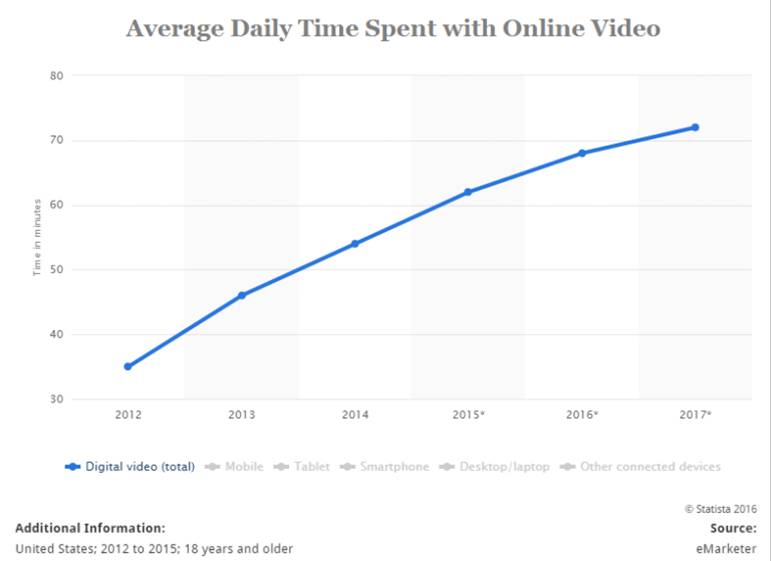
In addition, mobile video advertising is expected to grow significantly next year, from $6.72bn in 2017 to $9.90bn in 2018.
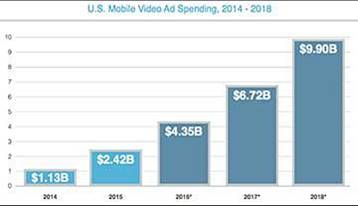
Source: smaato.com
This will cause the video ad format to continue being reinvented. We will see more things like vertical video, 360 video, outstream, mobile-first video, etc.
This means that marketers will need to create videos with different lengths for each platform to better engage with their audience.
Channel-specific strategies will become more important
In order for marketers to be successful with native advertising, they will need to create content specifically for each platform.
For example, we know that 85% of people on Facebook watch videos without sound.
This will cause advertisers to add subtitles to their videos so they can better engage with their audiences.
At the same time, 96% of people on YouTube watch videos with sound on. This means that adding subtitles on YouTube is not as important.
RELATED: What is Native Advertising?
Another thing is the length of the videos.
According to HubSpot, the perfect length of an Instagram video is just 30 seconds, for Facebook is 1 minutes and for YouTube – 2 minutes.
This means that marketers will need to create videos with different lengths for each platform to better engage with their audience.
For Instagram, brands will need to create promoted stories ads. While on YouTube they will need to create engaging video ads that keep people watching.
You’re going to see more sponsored content such as blog posts, videos, photos, etc.
Sponsored content will be the fastest-growing micro-segment
In 2018, brands are about to tap even more into sponsored content and to leverage influencer marketing.
You’re going to see more sponsored content such as blog posts, videos, photos, etc.
More influencers will be paid by brands to publish content native for their platforms.
For example, you’re going to see more blog post and YouTube videos reviewing products.
RELATED: Measuring the Business Impact of Influence
Instagram influencers are going to publish more posts promoting brands to their audiences. They will be more likely to accept partnerships as ways to monetize their web presence.
The content will blend with its surroundings which might make it harder for people to distinguish sponsored content.
This might force governments to enforce more rules and regulations.
The bad news is that these kinds of fines will continue as long as people don’t comply with the rules.
Rules and standards will increase
In 2016, a majority of publishers are not following the FTC’s Native guidelines.
And some of them paid a high price for that.
For example, Warner Bros. has settled FTC charges for deceiving their customers during a marketing campaign for the video game Middle Earth: Shadow of Mordor.
The reason is that they have failed to adequately disclose that the company paid online influencers thousands of dollars to post positive gameplay videos on YouTube and social media.
RELATED: A-Z Glossary of Native Advertising Terms
According to FTC, consumers have the right to know if reviewers are providing their own opinions or paid sales pitches.
The bad news is that these kinds of fines will continue as long as people don’t comply with the rules.
In many ways, marketers are victims of their own success. In their search for channels and strategies that work better, they sometimes cross the line into misleading editorials.
That’s why the trend will be for rules and standards to increase to protect customers from being deceived.
Advertisers need to create their strategies with mobile-first perspective.
Upshot
Mobile native advertising is going to dominate the ad space in 2018.
This means that advertisers need to create their strategies with mobile-first perspective.
They need to understand the shift from publishers to social media platforms.
As they do, they need to create content that better match these platforms so they can engage effectively with their audience.
RELATED: What is an advertorial?
We know that channel specific strategies and videos will become more important. This will require brands to put more work into their campaigns.
So it won’t be easy but, hopefully, it will be worth it.
What do you think is the biggest trend in mobile native advertising? Let us know in the comments below.
